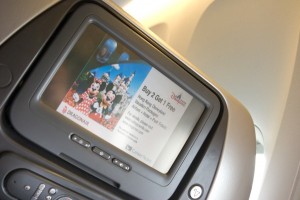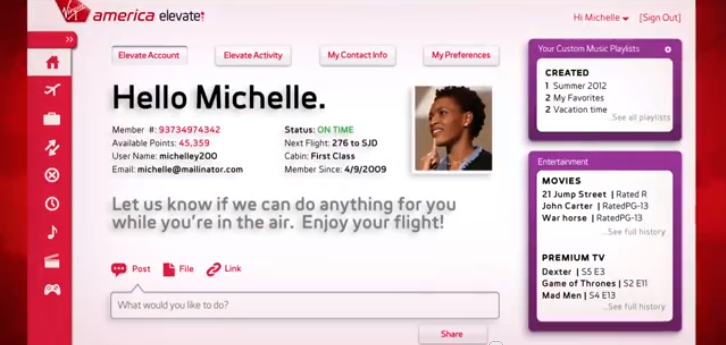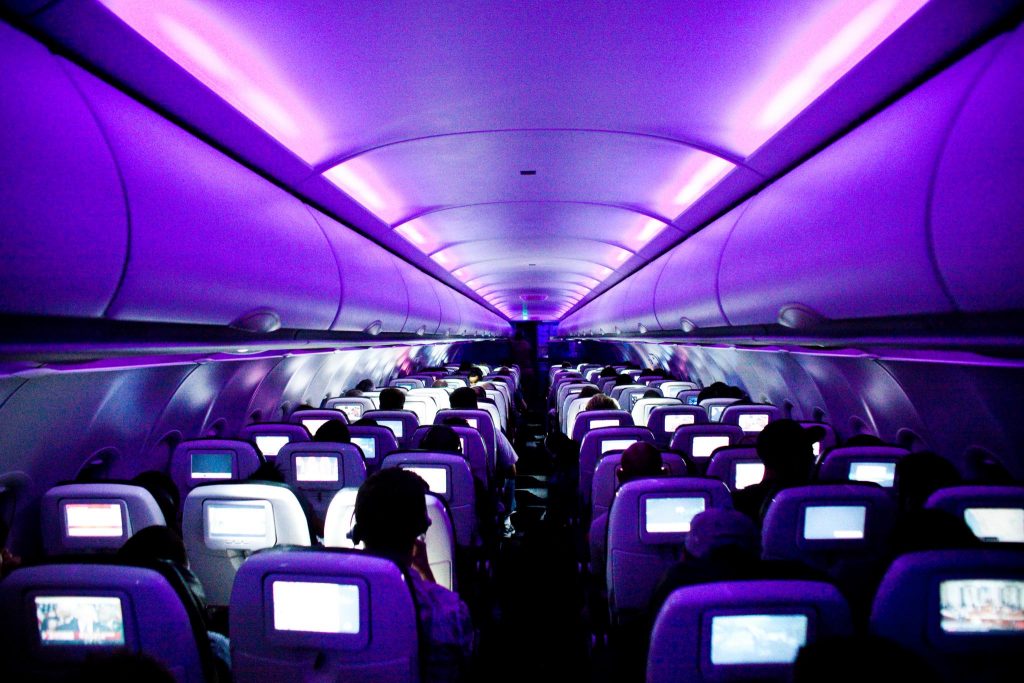It’s hard to escape advertising, even at 35,000 feet.
Qantas recently invited television networks to pitch ‘innovative’ new ideas for in-flight advertising. The Flying Kangaroo wants to move away from traditional TV-style ads on its in-flight entertainment (IFE) systems as well as show different ads to passengers in business, first and economy. The only problem is that traditional television networks haven’t done anything innovative in the advertising space for at least 20 years. Why not ask the guys rewriting the rules?
The Interactive Advertising Bureau reports digital advertising revenue in the United States alone reached $42 billion in 2013, ahead of broadcast television for the first time and close to the $66 billion for broadcast and cable combined. In less than 10 years Internet advertising has progressed from in-your-face pop-ups to being smart, personal and occasionally useful. Most of us will admit to clicking an ad in Google search results. Everyone will admit to muting a television ad.
What can Qantas and other airlines learn from digital advertising that might lift their bottom line and improve the overall passenger experience?
A bum on a seat in front of a screen for 14 hours is worth money. Even on short domestic flights, that level of attention is worth something.
Before you board a flight the airline knows who you are and where you will be seated. They also know who will be seated in seat 4A and who will be seated in 18B. They know if you’re male or female, where you’re from, how old you are and whether you’re travelling alone, with family or with a colleague. If you’re a member of their frequent flyer program, chances are they know a lot more. It’s time to harness this data.
As I sit down and begin to browse the entertainment options on the seat-back IFE it’s time for the airline to make an impression.
Instead of showing me (a male in his 30s) an advertisement for retirement funds, show me an ad for hotels in Melbourne that give a discount for three night stays — because you, as the airline, know I fly this route every month and stay in Melbourne for three nights each time.
Show me a pre-roll for computer accessories because you know I just used some of my frequent flyer points to make a purchase for a new laptop.
It’s taking what Facebook and Google do now and applying it to what passengers experience when they fly. Airlines needs to approach in-flight advertising like the Internet approaches advertising: current, personalised and granular.

Seat back IFE advertising. Photo by raymondtan85
https://flic.kr/p/8ab2sE
(CC BY-NC-ND 2.0)
It would be a neat little trick for advertisers to show members of the same family seated side-by-side different versions of the same advertisement. One targeted to Mum and one to Dad. Nothing is more valuable to the advertiser than potentially triggering a conversation amongst family about a product.
Yet the real benefit for travellers comes when advertising merely supports a bigger change to improving customer experience.
Acknowledging customer individuality is critical to airline loyalty and personalising the experience for passengers for the duration of their flight is one of the best ways to provide it. Not just through advertising, but content, tailored in-flight services (don’t make me browse for a G&T when you know it’s my favourite order) and customer feedback.
What if the price of your airfare decreased as the number of in-flight ads you watched increased?
Qantas isn’t blind to the fact people don’t necessarily like or want in-flight advertising. After all, you’ve paid for a ticket, why should you be forced to sit through advertising? But maybe there are benefits for passengers, in addition to the airline and advertisers. What if you’re rewarded for viewing an ad?
For every advertisement you watch during your flight, the cost of your next flight could be a couple of dollars less. You could be rewarded in frequent flyer miles, or given the chance to win targeted promotions.
Advertisers effectively begin to contribute to the cost of your ticket.
The airline could even confirm you watched an ad by requiring you to answer a question about it. More innovative solutions might be for the ad to be part of an interactive game where you play along.
It’s blue sky thinking when applied to the airline industry, routine and expected when applied to digital.

Virgin America’s personalised IFE experience
Personalised IFE technology is already available to airlines. Two years ago Virgin America and Sales Force teamed up to create a social IFE system that personalises the experience for travellers. There’s many other solutions out there and Android based IFE systems leave the door open to other creative uses.
While expensive aircraft refits of IFE systems are obviously an ongoing consideration for airlines, they’re inevitable and passenger expectations should be planned for well in advance. For airlines like Virgin Australia which are rolling out ‘Bring Your Own Device’ entertainment on domestic flights, it’s less of a concern. For them it becomes easier to provide innovative entertainment and advertising solutions as they essentially become iOS and Android developers able to develop solutions in time with consumer demands.
Advertising as a means to better PaxEx.
If Qantas and other airlines legitimately want to innovate with in-flight entertainment and advertising they need to look at what’s happening online.
Airlines need to embrace the creative ways that web and software developers are engaging with customers and not how television networks are losing them. They need to copy how companies like Google and Facebook are providing consumers with more relevant advertising and look at how advertising fits into their wider business model.
When so few of us want in-flight advertising, making it relevant, interesting and beneficial will make it less of a pain to endure. Most importantly, the positive flow on effects of a personalised experience will contribute to a better time in the sky.
